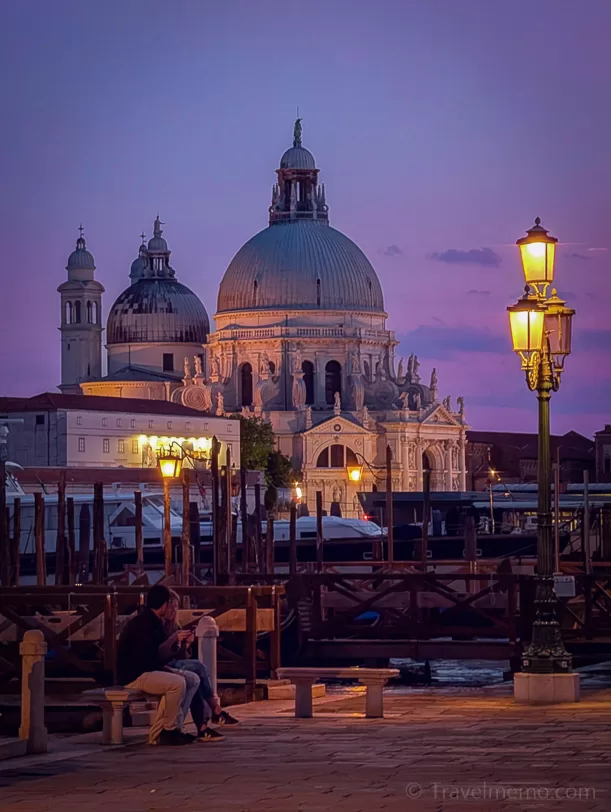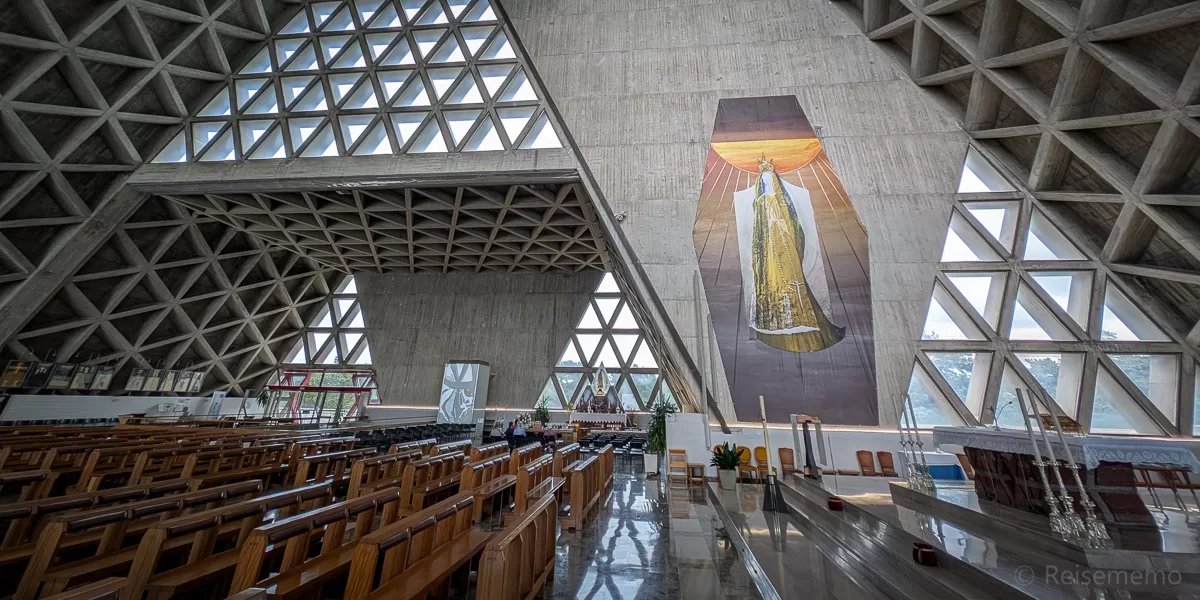While Trieste itself offers a unique coffee culture and Habsburg charm, the city’s strategic location makes it an ideal base for exploring some captivating destinations.
Nestled between Italy, Slovenia, and the Adriatic Sea, Trieste opens doors to fairy-tale castles, architectural marvels, underground wonders, and a vibrant capital city—all within easy reach.
Below are my recommended trips around Trieste. The travelogue on Trieste itself is available here.
To be mobile on site, we rent a fancy Fiat 600 via Discover Cars rental car portal – a very smart little SUV that also fits through the small streets!
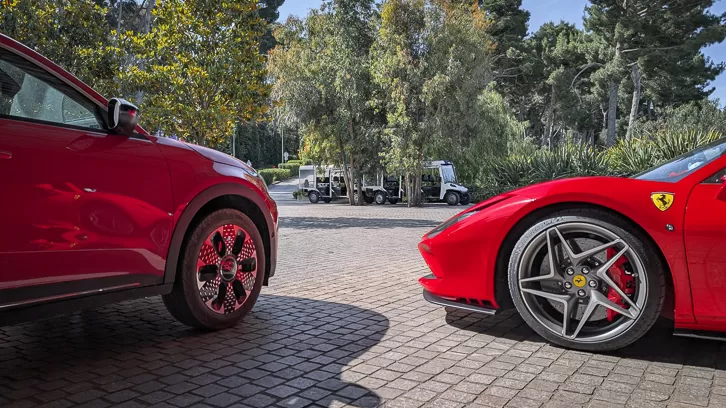
Table of Contents
Santuario Monte Grisa: Brutalist Pilgrimage Church above the Clouds
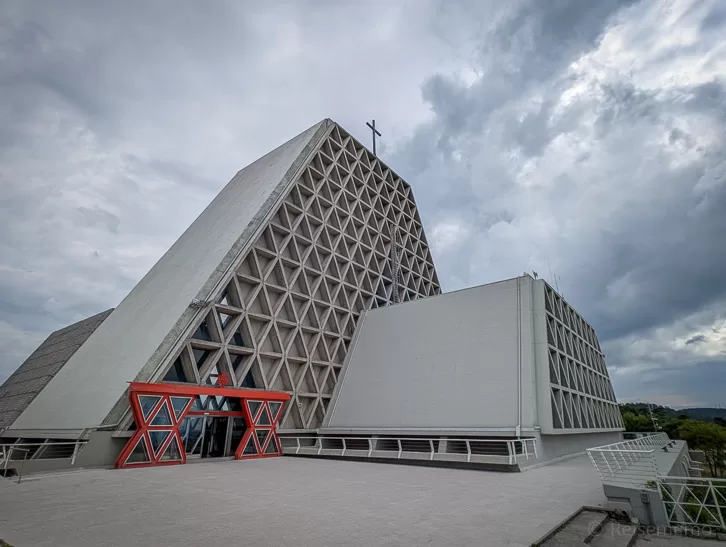
For a completely different architectural experience, venture up to the Santuario Monte Grisa, one of the most striking religious buildings in Europe.
Designed by architect Antonio Guido in the Brutalist style and completed in 1966, this church dedicated to the Virgin Mary sits 330 meters above sea level, offering breathtaking views over Trieste and the Adriatic.
The church’s bold triangular design will surprise visitors expecting traditional religious architecture, but its modernist concrete structure creates a powerful spiritual atmosphere.
I was quite impressed, indeed!
The interior features stunning stained glass windows that bathe the space in colorful light, while the minimalist altar draws the eye upward toward the dramatic angular ceiling.
What makes this visit truly special is the panoramic terrace surrounding the church. On clear days, you can see across the Gulf of Trieste to the Istrian Peninsula and beyond to the Julian Alps. You can allegedly spot Venice’s towers from here.
Getting there: Drive up the winding Monte Grisa road (15 minutes from central Trieste) or take a taxi.
Grignano Miramare Castle: A Fairy-Tale by the Sea
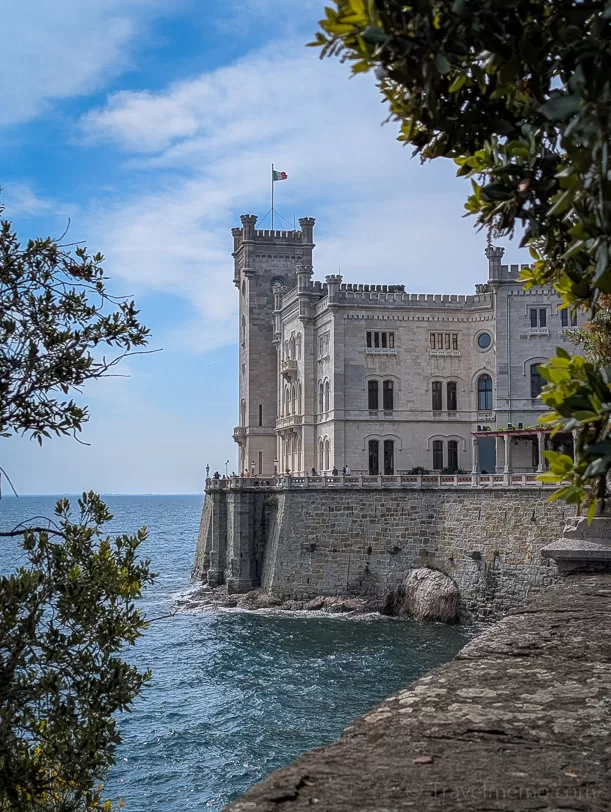
Just 8 kilometers northwest of Trieste, Miramare Castle stands as one of the most romantic and tragic castles in Europe.
This 19th-century masterpiece, perched dramatically on a rocky promontory overlooking the Gulf of Trieste, was built as a love letter from Archduke Maximilian of Austria to his wife Charlotte.
The white limestone castle, completed in 1860, perfectly embodies the romantic historicism popular during the Habsburg era.
Inside, the lavishly decorated rooms tell the story of Maximilian and Charlotte’s brief happiness before tragedy struck—Maximilian would later become Emperor of Mexico and meet his fate there only 7 years after the castle’s completion.
The castle’s 22 acres of botanical park are equally impressive, featuring plants from around the world that Maximilian collected during his naval travels.
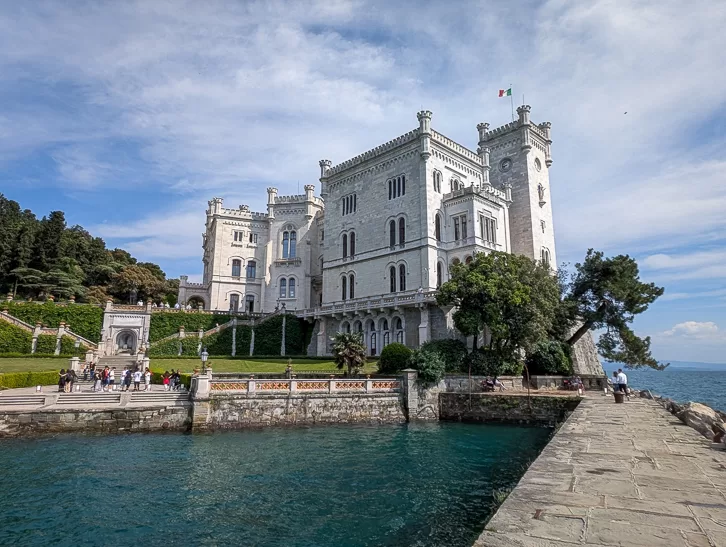
Getting there: Trieste’s hop-on hop-off bus will take you here as well as taxis or your rental car.
Muggia: A Venetian jewel across the bay from Trieste
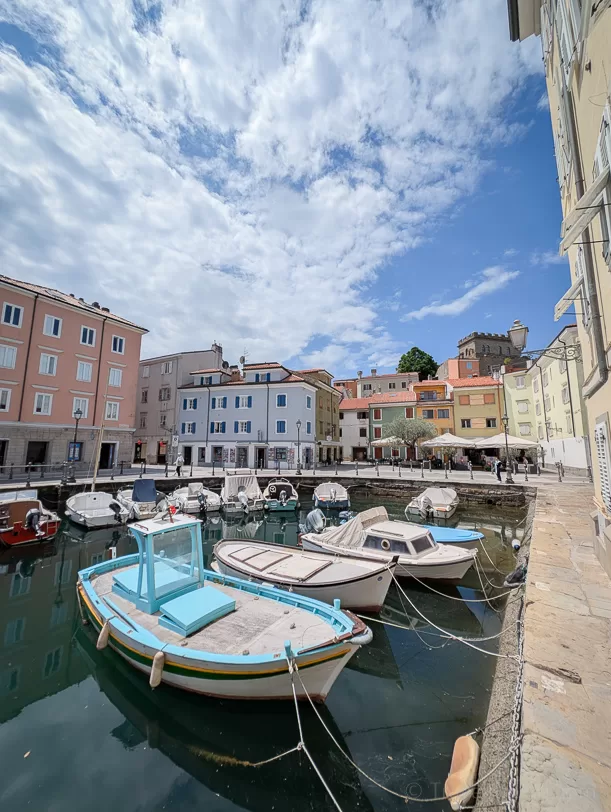
Just across the bay from Trieste lies the charming fishing town of Muggia, the last remaining Venetian settlement on the Istrian coast.
This picturesque town offers a delightful contrast to Trieste’s Habsburg grandeur with its distinctly Italian character and relaxed coastal atmosphere.
Muggia’s historic center is a maze of narrow streets lined with colorful houses, Venetian-style palazzi, and intimate piazzas.
The town’s cathedral, dedicated to Saints John and Paul, showcases beautiful Venetian Gothic architecture, while the 13th-century castle ruins offer panoramic views over the coastline.
The real charm of Muggia lies in its unhurried pace and authentic local life.
Stroll along the harbor where fishing boats bob gently in the water or simply enjoy an afternoon aperitivo at one of the waterfront cafés.
The town’s restaurants specialize in fresh seafood, offering everything from mixed grilled fish to elaborate seafood risottos that showcase the best of Adriatic cuisine.
We choose Trattoria Al Castello, a modest restaurant tucked away behind the castle. Their grilled mixed fish is amazing! The short, uphill stroll from the port is absolutely worth it.
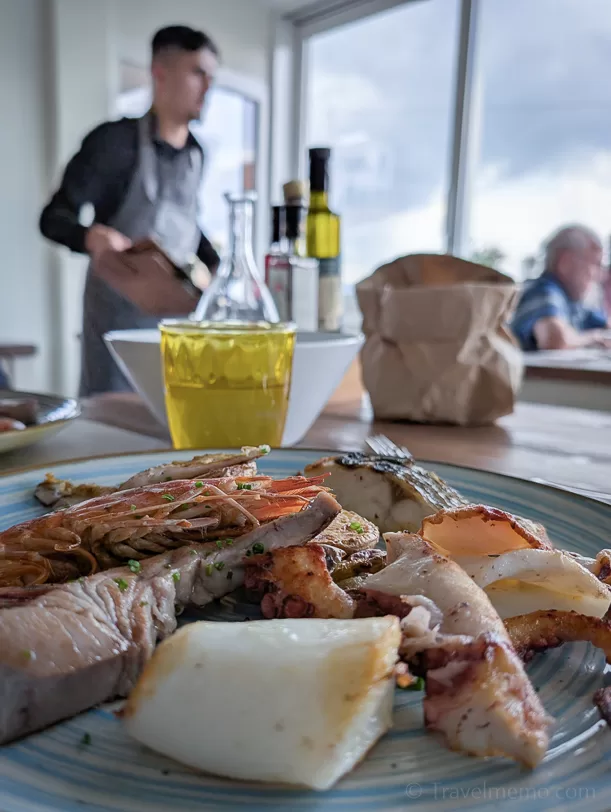
Getting there: The most scenic option is the boat service from Trieste’s Molo Bersaglieri (30 minutes, seasonal).
Alternatively, take bus line 20 (45 minutes) or drive via the coastal road (25 minutes).
Postojna Caves: Underground Wonders (45 minutes drive)
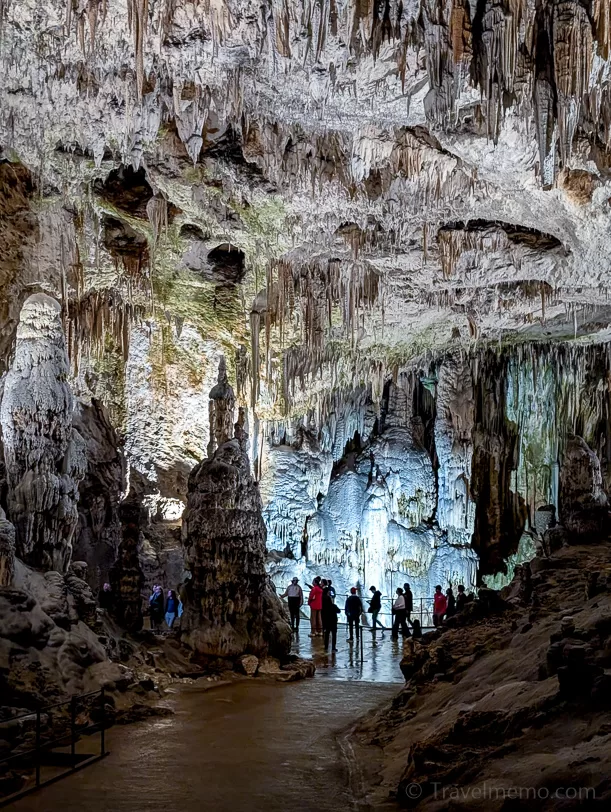
One of Slovenia’s most famous attractions, the Postojna Caves represent one of Europe’s most spectacular underground systems.
This UNESCO-listed wonder lies just 45 minutes from Trieste, making it perfect for a half-day excursion into a completely different world.
The caves stretch for over 24 kilometers, though visitors explore about 5 kilometers during the standard tour.
What makes Postojna unique is its combination of a train and walking tour. You will ride the cave railway through the initial chambers before strolling 1.5 kilometres through the most beautiful formations at a leisurely pace.
The cathedral-like chambers, adorned with stalactites and stalagmites formed over millions of years, create an otherworldly atmosphere.
The famous “Brilliant” hall, with its white calcite formations, and the “Concert Hall,” known for its exceptional acoustics, are particular highlights.
Keep an eye out for the caves’ most famous resident: the olm, or “human fish,” a blind salamander that can live up to 100 years and has become a symbol of Slovenia’s underground world.
The temperature inside remains a constant 10°C (50°F) year-round, so bring a jacket even on warm summer days.
Getting there: Drive via the A1 highway toward Ljubljana (45 minutes).
Public transport options include buses from Trieste to Postojna village, though having a car provides more flexibility for timing your visit.
Ljubljana: Slovenia's Charming Capital (1 hour 15 minutes drive)
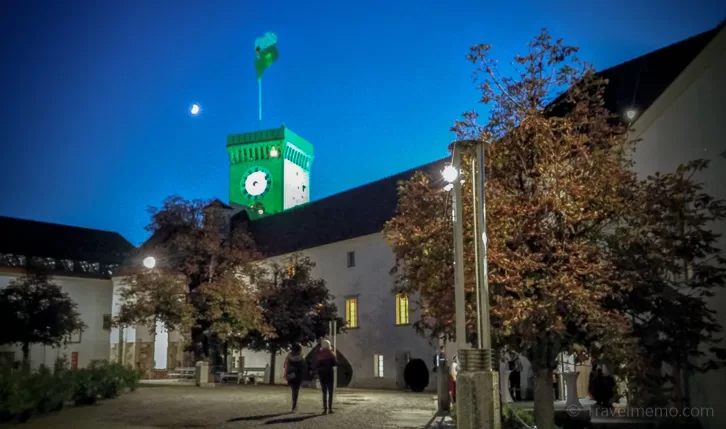
Slovenia’s capital city makes for a perfect day trip, combining fairy-tale architecture, vibrant café culture, and one of Europe’s most pedestrian-friendly city centers.
Ljubljana (pronounced “Lyoo-bly-AH-nah”) boasts baroque and art nouveau buildings that are reflected in the Ljubljanica River.
The city’s crown jewel is Ljubljana Castle, perched high above the old town and accessible by funicular railway or by foot.
From the castle walls, you’ll enjoy panoramic views over the terracotta rooftops and the distant Julian Alps.
The old town itself is a delight to explore on foot. Cross the famous Triple Bridge (Tromostovje), designed by Slovenia’s most celebrated architect Jože Plečnik, and wander through the central market where local vendors sell everything from fresh produce to handmade crafts.
Don’t miss the Dragon Bridge with its iconic dragon statues—legend has it that the dragons wag their tails when a virgin crosses the bridge.
The downtown area is largely car-free, creating a relaxed atmosphere perfect for café-hopping and people-watching.
Ljubljana’s café scene rivals any European capital, with numerous spots offering excellent coffee and local pastries.
Try a traditional kremšnita (cream cake) or potica (rolled pastry with various fillings) while watching life unfold in one of the charming squares.
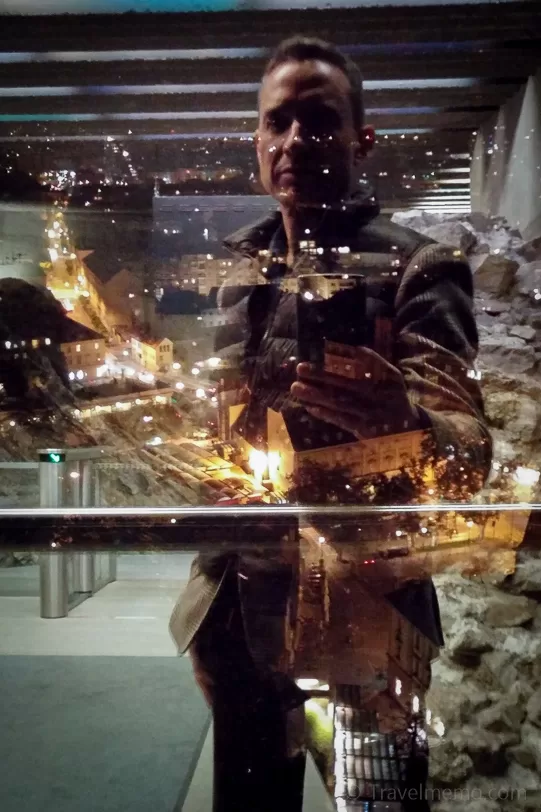
Getting there: Drive via the A1 highway through scenic countryside (1 hour 15 minutes).
Regular bus services also connect Trieste and Ljubljana (2 hours), making this accessible even without a car.
Venice: The Nearby Canal City (1 hour 45 minutes drive)
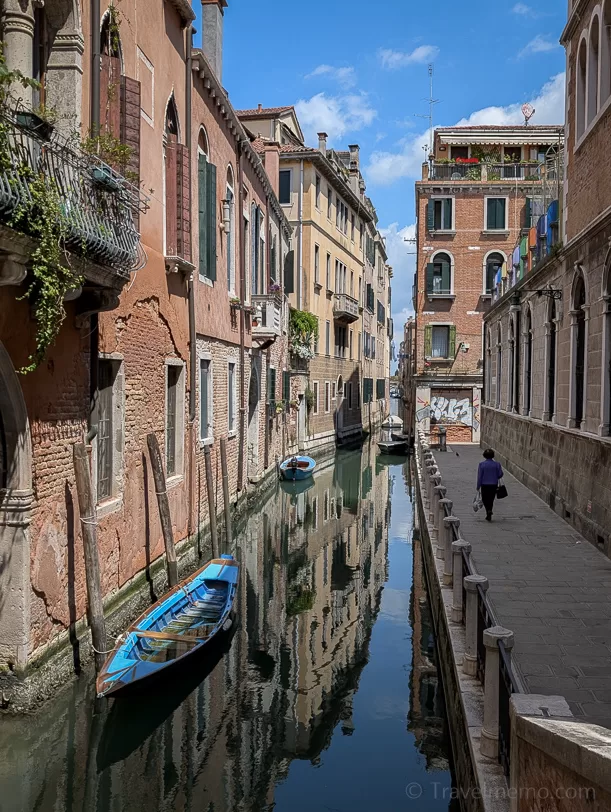
The proximity of Venice to Trieste makes it an irresistible day trip option.
The journey itself is part of the experience, taking you through the flat agricultural landscapes of the Veneto region before arriving at Venice’s Santa Lucia station, where the Grand Canal immediately greets you with its bustling water traffic.
For a unique perspective, take the vaporetto (water bus) to San Giorgio Maggiore for panoramic views of St. Mark’s Square and the Doge’s Palace.
Getting there: Drive to Venice and park in one of the mainland parking areas like Tronchetto or Mestre (1 hour 45 minutes total).
Alternatively, take the train from Trieste Centrale to Venice Santa Lucia (2 hours), which eliminates parking concerns and is often more relaxing.
For this trip, we use the Discover Cars rental car portal and pick up a stylish Fiat 600 from Venice Airport. It is large enough to fit our two large travel bags, yet small enough to navigate the narrow streets alongside the Mediterranean.
